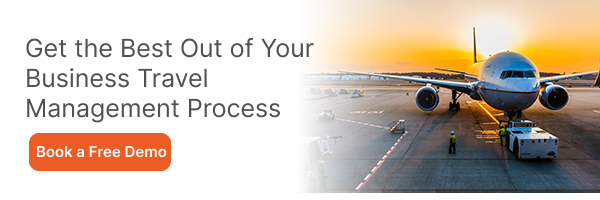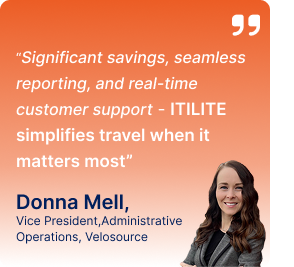
A lunch meeting combines meals with business discussions. It has a more relaxed feel than a regular meeting room, is simple to organize, and lets employees network casually. Whether with your team or pitching to a client, you can build connections while discussing work.
Compared to a meeting at an office, a business lunch meeting feels less formal. This relaxed atmosphere makes conversations flow smoother. Also, picking a quiet lunch spot means fewer interruptions, letting everyone stay focused.
This blog explains the 5 essential tips for planning lunch for business meetings. The guide covers everything from choosing the right venue to sending invites.
1. Define the Objectives and Prepare the Agenda
Before sending out invitations, define clear objectives for the business lunch meeting. These goals will guide the agenda and ensure the discussion remains productive.
Tips for Preparing Agenda
A meeting agenda is a structured outline of topics and activities you need to address in the meeting. Here are tips to keep in mind while making the agenda.
Here are tips to keep in mind while making the agenda for lunch for business meetings.
- Consider attendees’ roles and responsibilities.
- Assign time slots for each agenda item.
- Organize the agenda in a logical sequence.
- Identify specific discussion topics.
- Assign time limits to agenda items.
- Plan for engagement and participation.
- Provide necessary pre-meeting materials.
- Be prepared to adapt the agenda as needed.
- End with a recap and next action steps.
| Agenda Template for Networking and Relationship Building Date: ______ Time: ______ Location: ______ Duration: _______ Objective: Expand professional network and establish connections with industry peers. • Introduction of attendees (10 minutes) • Networking icebreaker activity (20 minutes) • Informal discussion over lunch to share industry insights or challenges (30 minutes) • Exchange of business cards and contact information (10 minutes) • Follow-up plans and scheduling future meetings (10 minutes) • Wrapping up with closing remarks (5 minutes) |
2. Choose the Right Venue
Selecting the perfect venue is key to a successful business lunch meeting. You need to consider whether it aligns with the nature of the meeting. For instance, an upscale restaurant might be appropriate when meeting a high-profile client. On the other hand, a relaxed setting may be more suitable for team meetings.
For networking event
Pick an open-layout venue like a lounge to encourage mingling among attendees.
Brainstorming Session
Opt for a creative space with writable walls, like a co-working hub. It can inspire innovation during brainstorming.
Things to Consider While Choosing the Venue
Location
Consider whether the location is convenient for everyone attending. Opt for a venue that’s easy to reach and isn’t in a busy area with lots of traffic.
Space
Ensure the venue has enough room to accommodate all attendees. It should allow for easy movement without feeling cramped or crowded.
Ambience
Select a venue with a professional atmosphere when planning lunch for business meetings. Consider factors such as noise levels, lighting, and overall ambiance.
Privacy
Ensure the venue offers privacy for confidential discussions. Private dining rooms can provide a better setting for business meetings.
Quality of Service
Evaluate the quality of service provided by the venue. Consider the attentiveness of staff, promptness of service, and overall hospitality. Opt for a venue with exceptional service to improve attendees’ experience.
Cost and Budget
Determine the budget for the business lunch meeting and choose a venue that aligns with it. Balance the cost with the value provided by the venue in terms of quality, service, and amenities.
Suggested Read: 11 Tips for efficient Business Networking
3. Choose the Right Food
Food selection impacts the overall experience of lunch for business meetings. Consider food allergies, intolerances, and dietary restrictions when planning the menu. Cater to diverse dietary preferences among your guests. Depending on it, the menu can include vegan, gluten-free, and other dietary needs.
When planning for lunch, consider the duration of the meeting. Lighter fare like salads or sandwiches may be more appropriate for shorter meetings. On the other hand, heartier options like pasta dishes may be suitable for longer sessions.
Catering services offer a convenient solution for larger groups. However, it’s important to communicate any dietary restrictions to the caterer in advance.
| Example of Menu: Lunch for Business Meetings Appetizers Mixed Green Salad with Balsamic Vinaigrette Caprese Skewers with Fresh Mozzarella, Cherry Tomatoes, and Basil Main Courses Grilled Chicken Caesar Salad with Parmesan Cheese and Croutons Vegetarian Quinoa Bowl with Roasted Vegetables and Avocado Side Dishes Garlic Mashed Potatoes Seasonal Grilled Vegetables Desserts Assorted Fresh Fruit Platter Miniature Cheesecake Bites Beverages Iced Tea (Sweetened and Unsweetened) Sparkling Water with Lemon Wedges |
This menu offers a balance of healthy and flavorful options. It also accommodates various dietary preferences and restrictions.
4. Curate a Comprehensive Invite
A detailed invite for lunch for business meetings ensures seamless execution. Following are the steps to creating a business lunch meeting invite.
Determine Formality
Understand the formality of your event to tailor the invitation appropriately. Whether it’s a formal, casual, or working lunch, ensure the tone and content of the invitation reflect the nature of the gathering.
Include Essential Information
Date and Time
Clearly state the date and start time of the business lunch meeting.
Location
Provide the venue name and address. Also, include any specific directions or parking instructions.
Purpose of the Meeting
Briefly outline the purpose or agenda to set expectations for attendees.
Optional Information
What to Bring
Specify if attendees need to bring any materials such as notepads or pens. Clarify whether these items will be provided or if attendees should bring their own.
Dress Code
State the expected attire for the event. Inform attendees accordingly, Whether casual, business casual, or formal.
Nearby hotels
For out-of-town guests, provide information on nearby hotels. Additionally, provide any negotiated discounts or booking deadlines.
RSVP Instructions
Clearly, let attendees know how to RSVP for the business lunch meeting. Whether it’s through email, phone, or an online RSVP form. Set a deadline for responses to facilitate event planning. Also, ask them to communicate any dietary restrictions or special accommodations.
Personalization
Personalize the invitation by addressing recipients by name. Include a personalized message or greeting to make them feel valued and appreciated.
Branding
Incorporate your company’s branding elements to maintain consistency and reinforce brand identity.
Review and Proofread
Thoroughly review the invitation for accuracy, clarity, and completeness. Double-check all dates, times, and details to avoid confusion.
Meeting Invite Example
5. Have a Facilitator and Notetaker in the Meeting
The presence of a facilitator and notetaker can enhance the productivity of a business lunch meeting. Here’s why they are important.
Facilitator
Guiding Discussions
The facilitator keeps conversations focused on the agenda, ensuring you achieve meeting goals.
Encouraging Participation
They make sure everyone has a chance to share ideas. It creates a team-oriented atmosphere.
Time Management
The facilitator ensures topics are covered within set time limits, keeping discussions efficient.
Conflict Resolution
They help settle disagreements constructively, maintaining a positive environment.
Fostering Engagement
They encourage everyone to get involved by asking questions and leading activities.
Notetaker
Recording Discussions
The notetaker writes down important points, decisions, and tasks from the meeting.
Providing Reference
Their notes are helpful for attendees to review later. It helps ensure everyone understands what was discussed and what needs to be done next.
Ensuring Accountability
By documenting tasks, the notetaker helps make sure everyone follows through on their commitments.
Assisting Follow-Up
The notetaker’s records help follow up on any unresolved issues or tasks. This ensures they are addressed promptly and effectively.
Suggested Read: Team up and Take off: With ITILITE Events Travel
Plan Your Business Lunch Meetings Seamlessly
Use these helpful tips to organize lunch for business meetings smoothly. When it comes to arranging corporate group travel, itilite corporate travel management software offers valuable assistance. Whether you’re scheduling flights or booking hotels for your upcoming business trip, you can book it through itilite.
Additionally, our customer support team is available 24/7, standing by to help whenever you need it. Rest assured, we’re committed to ensuring your peace of mind while your employees travel.
Reserve a spot for a free demo today to know more!













